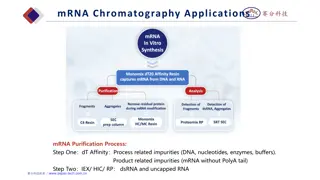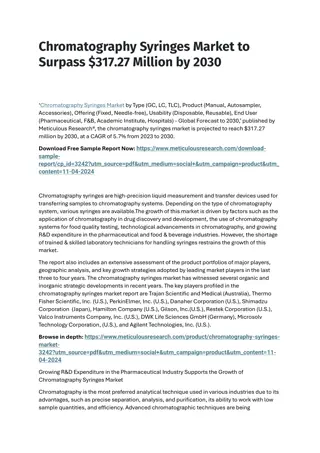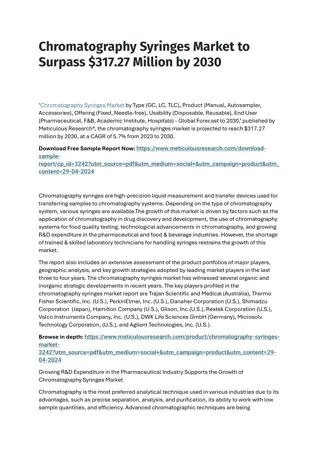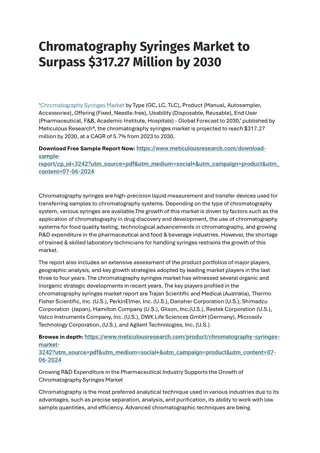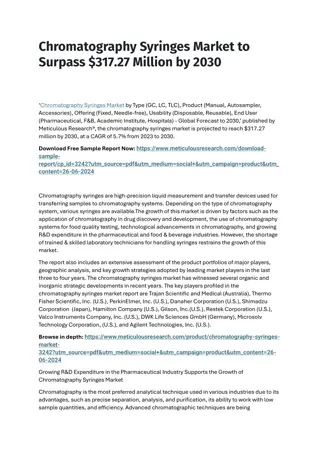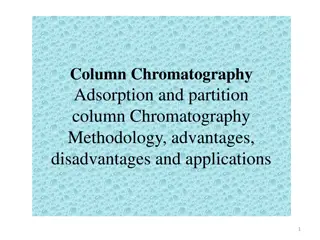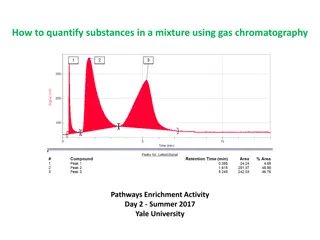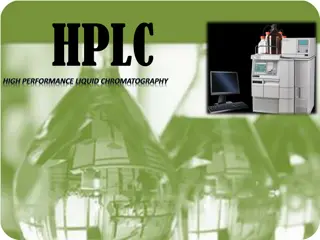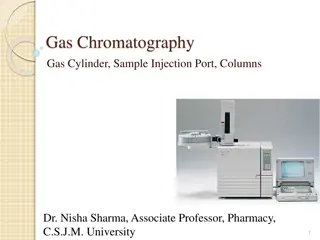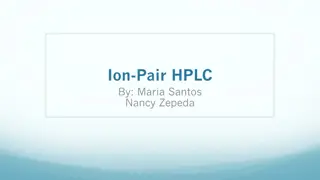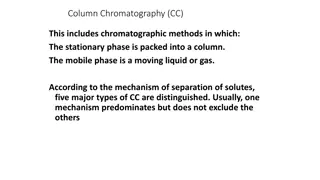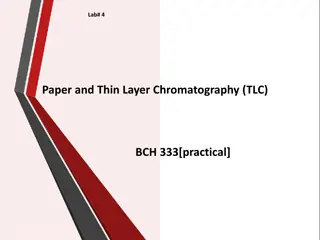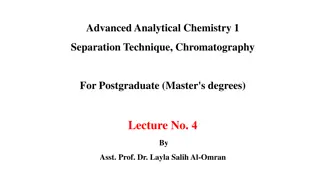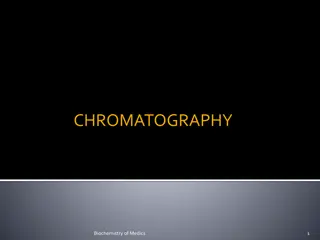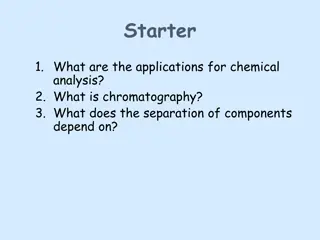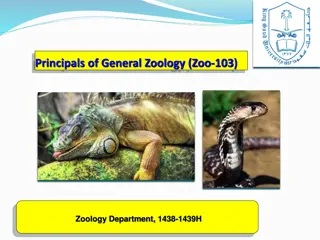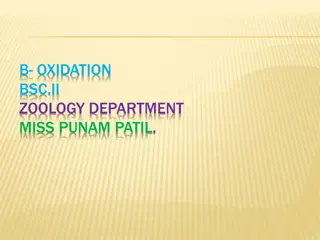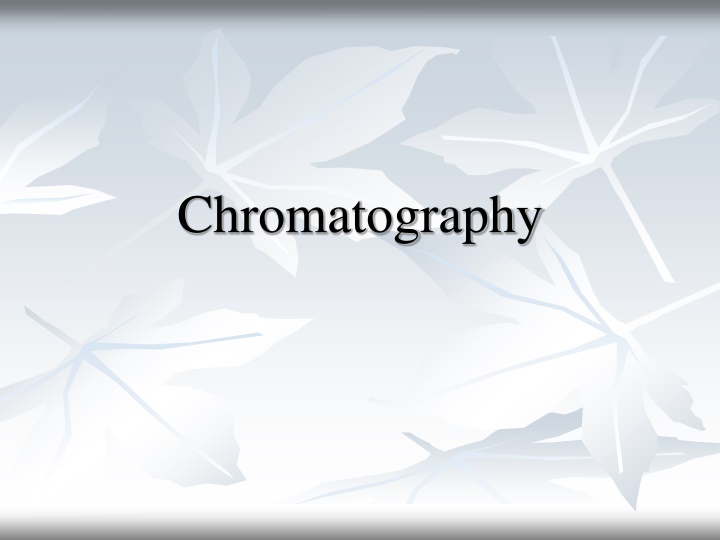
Chromatography: Methods, History, and Importance
Learn about chromatography, a vital method of separation used in various scientific fields. Discover its history, importance, techniques, and classifications, such as thin-layer chromatography (TLC) and column chromatography. Explore how chromatography works, its applications, and its role in Nobel Prize-winning research.
Download Presentation

Please find below an Image/Link to download the presentation.
The content on the website is provided AS IS for your information and personal use only. It may not be sold, licensed, or shared on other websites without obtaining consent from the author. If you encounter any issues during the download, it is possible that the publisher has removed the file from their server.
You are allowed to download the files provided on this website for personal or commercial use, subject to the condition that they are used lawfully. All files are the property of their respective owners.
The content on the website is provided AS IS for your information and personal use only. It may not be sold, licensed, or shared on other websites without obtaining consent from the author.
E N D
Presentation Transcript
History Mikhail Tsw ett, Russian, 1872-1919 (Botanist) In 1906 Tsw ett used chromatography to separate plant pigments He called the new technique chromatography because the result of the analysis w as ' w ritten in color' along the length of the adsorbent column Chroma means color and graphein means to w rite 2
Importance Chromatography has application in every branch of the physical, chemical and biological sciences 12 Nobel prizes were awarded between 1937 and 1972 alone for work in which chromatography played a vital role
Chromatography is a physical method of separation in which the components to be separated are distributed between two phases - one of which is stationary (stationary phase) while the other (mobile phase) moves through it in a definite direction. The chromatographic process occurs due to differences in the distribution constant of the individual sample components.
Chromatography Is a technique used to separate and identify the components of a mixture Works by allowing the molecules present in the mixture to distribute themselves between a stationary and a mobile medium Molecules that spend most of their time in the mobile phase are carried along faster
Classification according to the packing of the stationary phase: 1- Thin layer chromatography (TLC): the stationary phase is a thin layer supported on glass, plastic or aluminium plates. 2- Paper chromatography (PC): the stationary phase is a thin film of liquid supported on an inert support. 3- Column chromatography (CC): stationary phase is packed in a glass column.
Thin layer chromatography (TLC) is a method for identifying substances and testing the purity of compounds. TLC is a useful technique because it is relatively quick and requires small quantities of material.
Separations in TLC involve distributing a mixture of two or more substances between a stationary phase and a mobile phase. The stationary phase: is a thin layer of adsorbent (usually silica gel or alumina) coated on a plate. The mobile phase: is a developing liquid which travels up the stationary phase, carrying the samples with it. Components of the samples will separate on the stationary phase according to how much they adsorb on the stationary phase versus how much they dissolve in the mobile phase.
Interpreting the Data The Rf(retention factor) value for each spot should be calculated. It is characteristic for any given compound on the same stationary phase using the same mobile phase for development of the plates. Hence, known Rfvalues can be compared to those of unknown substances to aid in their identifications.
(Note: Rfvalues often depend on the temperature and the solvent used in the TLC experiment. the most effective way to identify a compound is to spot known substances authentic - next to unknown substances on the same plate.) In addition, the purity of a sample may be estimated from the chromatogram. An impure sample will often develop as two or more spots, while a pure sample will show only one spot
Summary A TLC plate is a sheet of glass, metal, or plastic which is coated with a thin layer of a solid adsorbent (usually silica or alumina). A small amount of the mixture to be analyzed is spotted near the bottom of this plate. The TLC plate is then placed in a shallow pool of a solvent in a developing chamber so that only the very bottom of the plate is in the liquid. This liquid, or the eluent, is the mobile phase, and it slowly rises up the TLC plate by capillary action. As the solvent moves past the spot that was applied, an equilibrium is established for each component of the mixture between the molecules of that component which are adsorbed on the solid and the molecules which are in solution.
In principle, the components will differ in solubility and in the strength of their adsorption to the adsorbent and some components will be carried farther up the plate than others. When the solvent has reached the top of the plate, the plate is removed from the developing chamber, dried, and the separated components of the mixture are visualized. If the compounds are colored, visualization is straightforward. Usually the compounds are not colored, so a UV lamp is used to visualize the plates.
Paper Chromatography A method of partition chromatography using filter paper strips as carrier or inert support. The factor governing separation of mixtures of solutes on filter paper is the partition between two immiscible phases. One is usually water adsorbed on cellulose fibres in the paper (stationary phase). The second is the organic solvent flows past the sample on the paper (stationary phase).
Partition occurs between the mobile phase and the stationary aqueous phase bound by the cellulose. The isolation depends on partition coefficient of the solute. ( ) c stationary c mobile = K ( )
Techniques of development with various flow directions Radial development Ascending development Descending development

